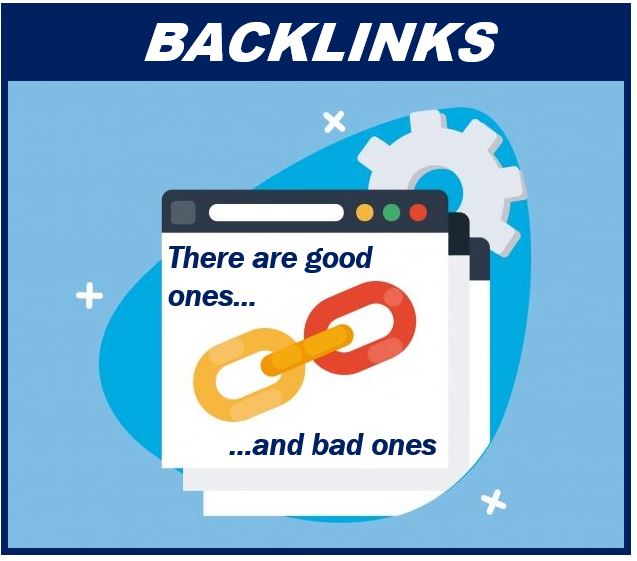
One of the best ways to boost the visibility of your website and improve your business’s placement in organic search rankings is through the cultivation of a high quality backlink profile. Search engines like Google still put a heavy emphasis on good backlinks as a key ranking factor while also continuously going after bad and suspicious linking practices. Gone are the days where spammy “link farms” and other linking schemes could generate results with little penalty. This push towards the importance of quality backlinks means that harmful or “toxic” backlinks can have a negative impact on your website if you let them get out of hand.
What Are Toxic Backlinks?
Toxic backlinks, such as links coming from suspicious, foreign or irrelevant websites or “link dump” directories, are types of links and linking strategies that will be picked up on by Google or other search engines and get your site penalized. Therefore, it is important to ensure that your website avoids low quality links and prioritizes the removal of said links before they can hurt your search rankings.
Types of Toxic Backlinks
Ever since the Penguin update back in 2012, Google has taken steps to reward sites they consider high quality while diminishing the web presence of sites that engage in creating or purchasing low quality links and link spam.
Google has two types of penalties for toxic backlinks: manual and algorithmic. Manual penalties mean someone on the Google webspam team has looked at your backlink profile and applied a penalty. Generally, this comes with a notification in Google Search Console. The more common penalties are algorithmic, done automatically by Google without any human review. If you trip the algorithm, you won’t get a notification in most instances but it’ll probably be pretty noticeable when your rankings slip and web traffic drops.
There are many types of backlinks that are considered red flags by Google. One helpful tool for evaluating backlinks is Ahrefs, but there are many other backlink monitoring tools that one can choose from. On Ahrefs, referring domains are graded on quality with a domain rating of 0 to 100, based on the strength of their own backlink profile. This gives an idea of the overall healthiness of the site. These types of tools can help you identify links that are considered low quality, though you can also use your own common sense to decide if a website seems suspicious. The following are backlinks that are best avoided to make certain your website remains healthy.
Links From Bad Neighborhoods
“Bad neighborhoods” is a term to describe toxic links coming from the seedier side of the internet. The most common of these are links that lead to porn sites, gambling sites or sites hawking pharmaceuticals/pills. Other bad neighborhoods to watch out for are link farms whose only purpose is to produce outbound links and hacked sites that black hat services utilize in order to “guarantee” backlink results.
Excessive Foreign Links
Generally speaking, you want most of your links coming from sites based in your country or area of the world, and for the most part you’ll want them to be in the same language as your site. Having a bunch of links from foreign websites with low quality ratings is a big warning and steps should be taken to disavow such links. However, if the foreign link is high quality or relevant to your site’s subject matter, you should be fine.
Irrelevant Links
Generally, you want your backlinks to be from sites that are relevant to your industry. If the website is for a criminal defense lawyer, you don’t want to see low quality links to an ecommerce site. Similarly, if the link has a nonsensical URL that seems suspicious, it is certainly worth doing a manual review and disavowing the link if necessary.
Comment/Forum Spam
If your site has tons of links from comment sections or posts/signatures on forums, Google will see it as a major red flag. If you are looking at a forum or comment section with non-existent moderation and tons of links, it is probably best to avoid associating with such a site. And if your site has a comment section or forum, make sure to moderate it to keep others from abusing it for links.
Low Quality Web Directories
Links from low quality web directories, especially ones that are just never-ending lists of domains, are not looked upon kindly by Google. Generally speaking, directories with lax criteria for submission are best avoided. It has been a long time since mass directory backlinks were an effective strategy, and at this point it is more likely to hurt your site than help.
Removing Toxic Backlinks
Toxic backlinks are an inevitable part of running a website even if you use best practices, so you want to stay on top of what links you are receiving and take steps to remove potentially spammy or harmful links as they arise.
Once you have looked through your backlink profile and made a list of the domains or links you want to remove, you can upload the list in .txt format to Google Search Console’s disavow tool. One thing to note is that it takes some time for Google to review and implement a disavow list, so be patient. It is also important to keep in mind that Google recommends using the disavow tool with caution in situations where you believe toxic links are actively harming your site.
Staying on top of your link profile is a necessary part of today’s SEO best practices. Don’t wait until toxic backlinks start having a negative effect on your search rankings and web traffic.
Author Bio
Kevin McTigue is a digital marketing specialist at JSMT Media. JSMT Media is a NJ web design company that offers a variety of digital marketing services including Search Engine Optimization and Google Ads Management.
Interesting Article: “How to Get Backlinks that Google Wants“

